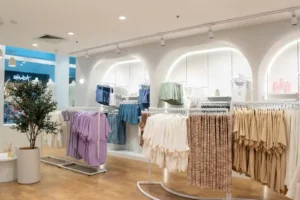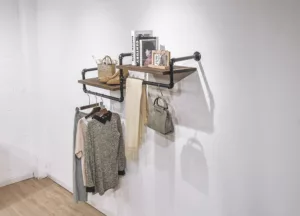I went into a shop the other day. A standard clothing boutique in a semi-tourist location: pink walls, wooden floorboards, and 3 or 4 rooms of clothing for sale. There was a fireplace, some antique furniture scattered around the shop and a feeling of cosy quaintness.
And signage on the walls ordering “No Photography in This Shop”.
We wondered why they would be so vehemently against photography – this is an area a lot of tourists visit, where it is commonplace to see people walking down the street with a camera.

Wouldn’t the owners be happy if their shop became
a part of people’s memories of the town? Or better
yet; people shared images and did some free
advertising for them?
The clothes, although nice, weren’t all parachute silk or delicately screen-printed. I mean, no matter how paranoid the owner, they couldn’t possibly think the camera flash would damage them.
Our curiosity got the better of us and we decided to ask the lady behind the counter (Who I strongly suspect was the owner). Her explanation for the posters, although unexpected, made sense, and is a sad indicator of how the internet age is hurting traditional bricks and mortar stores.
“People come into this shop, and try on clothes to see how they fit. Then they photograph the label or tag, and take it home and look for the same thing online for a cheaper price.”
In other words, they treat her shop as a showroom.
While having signs saying “No Photography” is probably not going to solve the problem, just alienate tourist customers, she has responded to what is a massive issue in brick-and-mortar retail in Australia.
And as technology increases, it becomes a tougher battle. For example, online giant Amazon has an app for smartphones which allows a consumer to scan a barcode in store and search for the same product on Amazon, where fewer overheads usually mean things are cheaper.
So what can be done? Banning photography, or blocking internet access in-store, will only eventuate in people not coming back.
To overcome showrooming in any effective manner, you must build on the reasons people go into shops in the first place.
Retail therapy is very real.
Humans have a basic desire for interaction with other humans. Online shopping is all very well, but walking through a shop is infinitely more rewarding, emotionally.

Women often “go shopping” with friends – proof that it’s a social activity.
They are unlikely to meet up and have a laugh and chat over a computer screen.
Shopping stimulates the senses, like going to an art gallery. Try as they might, companies cannot replicate these feelings online (yet!).
Harness this by becoming a Destination. If your shop is enjoyable enough, price is no longer the primary motivating factor. People just want to own a part of the experience. Gift shops at museums know this. Take the ‘museum gift shop’ concept one step further by having a ‘museum’ where everything can be bought.
Never forget how important it is for you to build rapport with visitors to your shop. You appreciate them for being in your shop, don’t you? Let them know. Befriend them, chat (about them, not you). Compliment them, genuinely. They are a human and you are a human – respect them, and they will in most cases return the respect.
If a visitor to your shop feels like they would be letting you down by not buying from you, if they feel like that would be like stabbing a friend in the back, they will find it very difficult to take a photo of a garment tag and look for it cheaper online.







